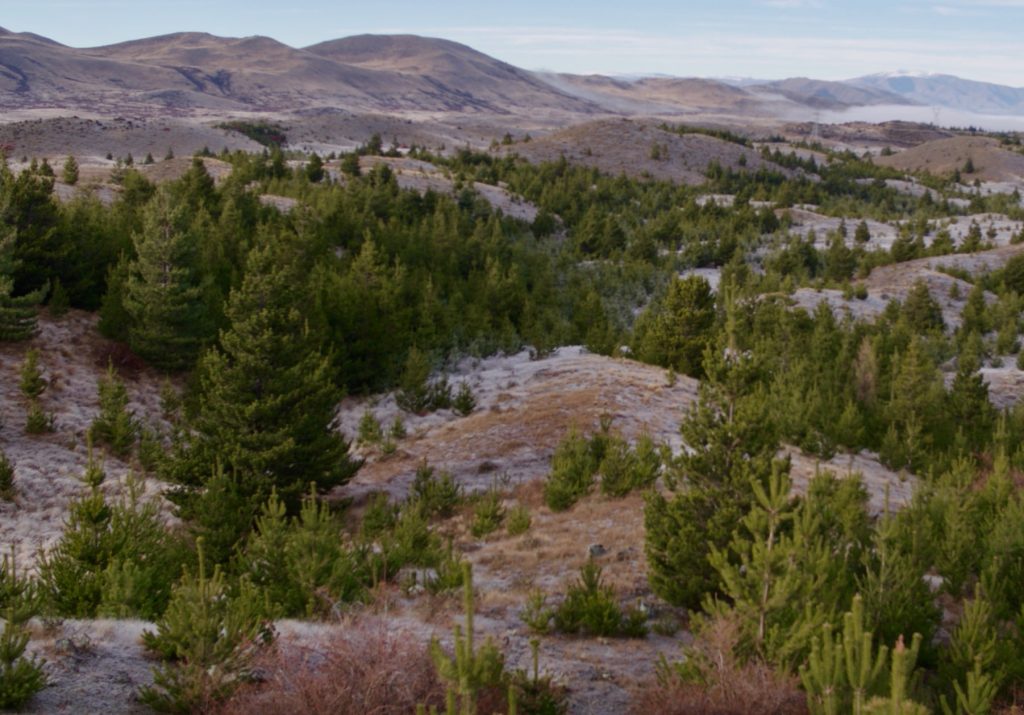The Mackenzie Basin has been called ‘ground zero’ for the battle against wilding conifers.
Wilding conifers are trees that spring up where they’re not wanted, and quickly take over a landscape. In Te Manahuna, pines like Douglas fir and lodgepole pine (Pinus contorta), have spread from trees planted by earlier government departments, to stop erosion, enhance the landscape and provide shelter.
The problem is one tree can produce thousands of seeds and when these seeds are blown by strong winds, they can be carried kilometres away. From the early plantings, wildings have quickly got out of control, drastically changing the tussock landscape.
Wilding conifers cause many problems. They grow much faster than native trees so plants like mountain flax and coprosma – which provide berries and nectar for native birds – don’t grow. Blankets of pine needles suppress native tussocks so butterflies, wētā, grasshoppers, lizards and other native species also lose their habitat.
They severely impact farmers by quickly taking over productive land. Wildings also need large amounts of water to grow, so less water reaches the streams and lakes, impacting on native fish populations and recreational activities like fishing and boating.
Te Manahuna landowners have been trying to get rid of wilding conifers for decades, and many are members of Wilding Free Mackenzie, a charitable trust working to deal with the challenges of wildings. A number of agencies are also working together to control them including DOC, LINZ, MBIE, ECan, and the National Wilding Conifer Control Programme.
Photos Dave Kwant


